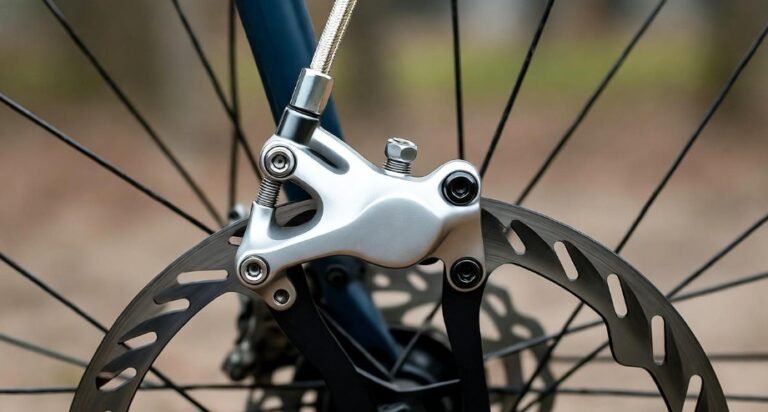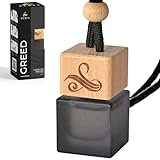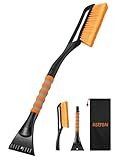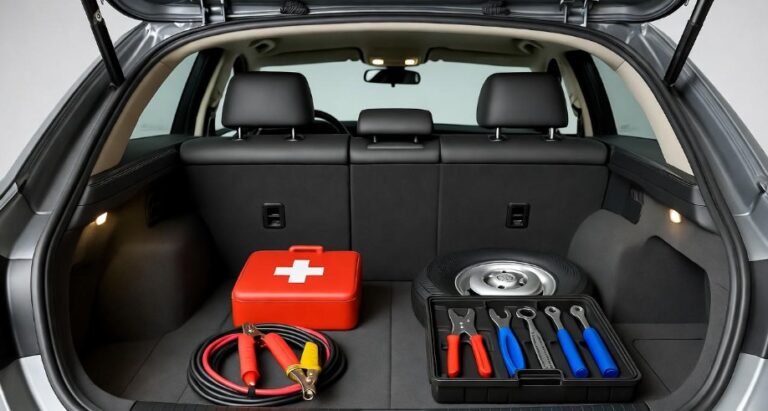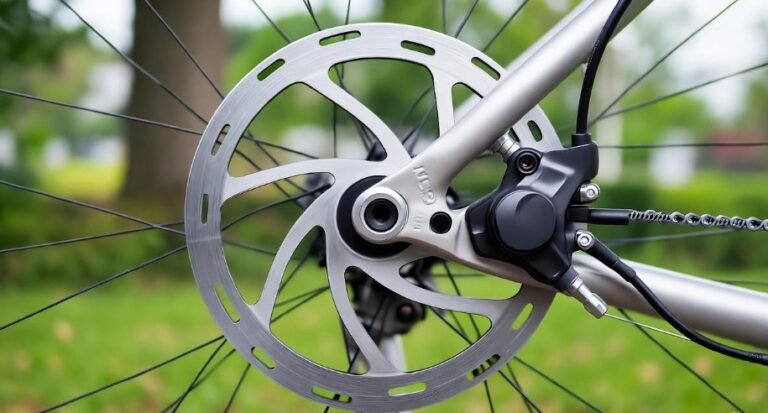Disc Brake Cycle Price 5000: Get Yours Now!
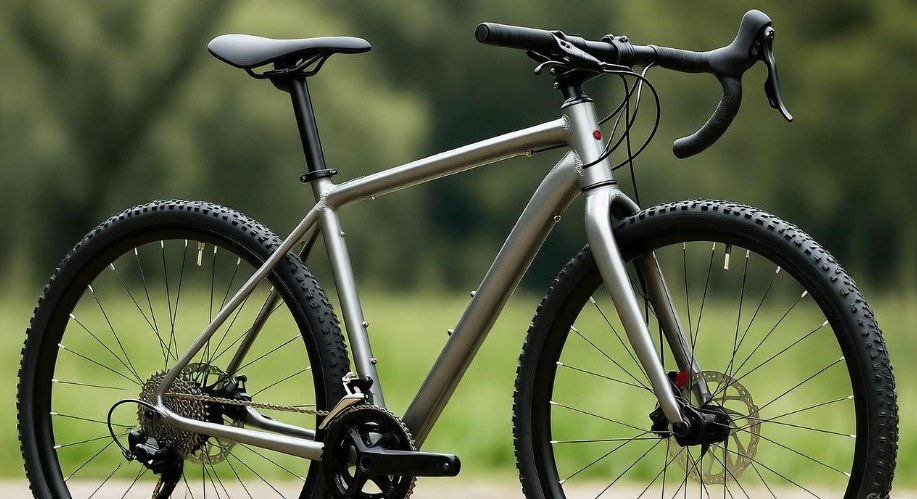
Looking for a reliable disc brake cycle priced around $5000? You’ve come to the right place! Discover top models and essential features to make your purchase confidently.
Key Takeaways
- Compare popular disc brake cycle models under $5000.
- Understand the benefits of disc brakes over rim brakes.
- Identify crucial components to check before buying.
- Learn about maintenance tips for your new cycle.
- Find out where to shop for the best deals.
Navigating the world of bicycles can feel complex, especially when you’re looking for specific features within a budget. If you’re on the hunt for a disc brake cycle price of around $5000, you’re in luck! This price point opens up a fantastic range of high-quality bicycles, offering excellent performance and advanced braking systems. Many cyclists find themselves confused by the sheer variety of options, but we’re here to simplify it. This guide will walk you through everything you need to know to find your perfect disc brake cycle. Get ready to ride with confidence and style!
Why Choose a Disc Brake Cycle? Understanding the Benefits
Before we dive into specific models and pricing, let’s understand why disc brakes are becoming the standard for many cyclists, especially in the $5000 price range. Disc brakes offer a significant upgrade in stopping power and control compared to traditional rim brakes. This enhances safety and confidence, particularly in challenging riding conditions.
Traditional rim brakes work by squeezing brake pads against the wheel’s rim. While effective for casual riding, they can struggle in wet or muddy conditions. Their performance can also degrade as the rim surface wears down. On the other hand, disc brakes utilize a rotor attached to the wheel hub and a caliper mounted to the frame or fork. This system provides more consistent and powerful braking, regardless of weather or rim condition.
For a disc brake cycle price of $5000, you’re looking at bicycles where these superior braking systems are a given. This means you’ll experience:
- Superior Stopping Power: Disc brakes can generate more force, allowing you to slow down or stop more quickly and with less effort.
- Consistent Performance: They are less affected by water, mud, and grime, providing reliable braking in all conditions.
- Better Modulation: This refers to the ability to control the braking force. Disc brakes offer finer control, allowing for smoother and more precise braking adjustments.
- Less Rim Wear: Since they don’t rub against the rim, disc brakes help preserve the lifespan of your wheel rims.
- Improved Aesthetics: Many cyclists find the look of disc brakes on modern bicycles more appealing.
Disc Brake Cycle Price 5000: What to Expect
When you set your sights on a disc brake cycle price of $5000, you’re entering the realm of performance-oriented bicycles. At this price point, you can expect bicycles that are:
- Lightweight: Manufacturers use advanced materials like carbon fiber and high-grade aluminum alloys to reduce weight, improving speed and handling.
- Equipped with High-Quality Components: Expect premium drivetrains (like Shimano Ultegra or SRAM Force), durable wheelsets, and refined frames engineered for specific riding styles.
- Designed for Specific Disciplines: Whether you’re into road cycling, mountain biking, gravel riding, or commuting, a $5000 budget allows for specialized designs that optimize performance for your chosen activity.
- Durable and Reliable: These bikes are built to last, using robust materials and refined manufacturing processes.
The $5000 price point is often considered the sweet spot for enthusiasts and serious riders who want a bike that can handle challenging terrain, compete in events, or simply provide an exceptional riding experience without breaking the bank into the super-high-end professional categories.
Types of Disc Brake Cycles Around $5000
The disc brake cycle price of $5000 can get you a fantastic bike for various types of riding. Here’s a breakdown of what you can typically find:
Road Bikes
For road cyclists, a $5000 disc brake bike is a serious step up. You’ll find:
- Aerodynamic Frames: Designed to cut through the wind efficiently, perfect for speed and racing.
- Lightweight Carbon Fiber Frames: Offering a balance of stiffness for power transfer and compliance for comfort.
- Electronic Shifting: In some cases, you might find entry-level electronic shifting systems, offering incredibly precise and fast gear changes.
- Performance-Oriented Geometry: Designed for an aggressive riding position that maximizes power output and aerodynamic efficiency.
Examples in this category might include models from brands like Trek (e.g., Domane SL or Madone SL series), Specialized (e.g., Roubaix or Tarmac SL series), or Giant (e.g., TCR Advanced or Propel Advanced series) that fall into this price bracket with disc brakes.
Mountain Bikes (MTBs)
A $5000 mountain bike will likely be a high-performance machine capable of tackling demanding trails:
- Full Suspension: Offering plush travel for absorbing bumps and improving control on rough terrain.
- High-Quality Suspension Components: Featuring advanced forks and rear shocks from brands like Fox or RockShox.
- Lightweight Aluminum or Carbon Frames: Balancing strength and weight for agility and durability.
- Powerful Hydraulic Disc Brakes: Essential for precise control on steep descents.
- Modern Drivetrains: Often 1x (single front chainring) drivetrains with a wide range of gears for simplicity and performance.
Look for offerings from brands like Santa Cruz, Specialized (Stumpjumper or Epic series), Trek (Fuel EX or Top Fuel series), or Giant (Trance or Anthem series) within this price range.
Gravel Bikes
Gravel bikes are incredibly versatile, blending road speed with off-road capability. For $5000, you can expect:
- Robust Frame Construction: Often aluminum or carbon, designed for durability and comfort over long distances on mixed surfaces.
- Generous Tire Clearance: Allowing for wider tires that provide more grip and comfort on unpaved roads.
- Mounting Points: For racks, fenders, and extra water bottles, making them ideal for bikepacking and long-distance touring.
- Stable Geometry: Built for confidence and control on loose surfaces.
Brands like Specialized (Diverge), Trek (Checkpoint), Cannondale (Topstone Carbon), and Salsa (Warbird) offer excellent gravel bikes around the $5000 mark.
Hybrid and Commuter Bikes
While many hybrid and commuter bikes are more budget-friendly, at the $5000 price point, you’re looking at premium models designed for:
- Exceptional Comfort and Durability: Often featuring carbon frames and high-end components for a smooth, reliable ride.
- Integrated Features: Such as built-in lights, fenders, and racks.
- Versatility: Capable of handling commuting, touring, and light trail riding.
- Advanced Drivetrains and Brakes: Ensuring efficient performance and safety in urban environments.
These might be less common at this exact price point compared to road or mountain bikes, but specialized urban or touring bikes with high-end features certainly exist.
Key Components to Consider for Your Disc Brake Cycle Price 5000
When you’re investing around $5000 in a disc brake cycle, paying attention to the components will ensure you get the best value and performance. Here are the critical parts to inspect:
The Frame Material
At this price, you’ll primarily see two frame materials:
- Carbon Fiber: Offers the best stiffness-to-weight ratio, leading to a lighter, more responsive ride. It also excels at absorbing road vibrations for added comfort.
- High-Grade Aluminum Alloy: Still a fantastic choice, offering durability and a good balance of weight and stiffness. Modern aluminum frames can be engineered to be very lightweight and comfortable.
Pro Tip: Ask about the frame’s warranty. Reputable manufacturers often offer lifetime warranties on their frames.
The Drivetrain (Gears)
The drivetrain dictates how smoothly and efficiently your bike shifts gears. For $5000, expect mid-to-high-end groupsets:
- Shimano: Common groupsets include 105 Di2 (electronic), Ultegra, or even Ultegra Di2. These offer excellent reliability, smooth shifting, and a wide range of gears for climbing and speed.
- SRAM: Rival AXS (electronic) or Force AXS are common. SRAM is known for its crisp shifting and often features 1x (single chainring) drivetrains on mountain and gravel bikes, simplifying mechanics and reducing weight.
Key Considerations:
- Gear Range: Ensure the gear ratios suit your intended riding. More gears offer finer adjustments, while a wider range is better for steep climbs.
- Electronic vs. Mechanical: Electronic shifting (like Shimano Di2 or SRAM AXS) offers unparalleled precision and ease of use but comes at a higher cost. Mechanical shifting is reliable and easier to maintain.
The Brakes: Hydraulic vs. Mechanical Disc
For a disc brake cycle price of $5000, you should almost exclusively find systems that use hydraulic disc brakes. These are superior to mechanical disc brakes:
- Hydraulic Disc Brakes: Use brake fluid to actuate the brake pads. They offer superior power, modulation (fine control), and require less hand effort. Brands like Shimano (e.g., RS series) and SRAM (e.g., Apex, Rival, Force) are industry leaders.
- Mechanical Disc Brakes: Use a cable to actuate the brake pads. They are more affordable and easier to maintain but offer less power and modulation than hydraulic systems. You’re unlikely to find these as the primary brakes on a $5000 bike unless it’s a very specific niche model.
Wheelset and Tires
The wheels and tires are crucial for ride quality, speed, and grip. At this price point:
- Wheel Material: You might find high-quality aluminum alloy wheels, which are durable and reasonably light. Some bikes might even feature entry-level carbon wheels, offering significant weight savings and improved aerodynamics.
- Tubeless Compatibility: Most high-end wheels and tires are now “tubeless-ready.” This means you can run your tires without inner tubes, allowing for lower tire pressures (for comfort and grip), reducing the risk of pinch flats, and improving rolling efficiency.
- Tire Choice: The type of tires fitted will depend on the bike’s purpose. Road bikes might have narrower, slicker tires for speed, while gravel or mountain bikes will have wider, knobbier tires for traction.
Suspension (for MTBs and some Gravel Bikes)
If you’re looking at mountain bikes or some gravel bikes, the suspension components are paramount:
- Fork Travel: The amount of travel (e.g., 120mm, 140mm, 160mm) will determine the bike’s capability on rough terrain. More travel is generally better for downhill and aggressive riding.
- Suspension Type: Look for air-sprung suspension, which is lighter and more adjustable than coil-sprung options.
- Brand Reputation: Brands like Fox, RockShox, and Marzocchi are known for their high-performance suspension systems.
Comparing Popular Disc Brake Cycle Models Under $5000
While specific models and prices fluctuate based on sales, new releases, and regional availability, here’s a look at what you might find from major manufacturers in the $5000 disc brake cycle category. These are illustrative examples and represent the type of bike you can expect at this price.
Road Bikes
| Brand | Model Example (Disc Brake) | Typical Frame | Key Components | Target Rider/Use |
| :——– | :————————- | :———— | :———————————————– | :———————————————— |
| Trek | Domane SL 5 / SL 6 | Carbon Fiber | Shimano 105 / Ultegra, Hydraulic Disc | Endurance Road, Comfort, Long Rides |
| Specialized | Roubaix Comp / SL7 Comp | Carbon Fiber | Shimano 105 / Ultegra Di2, Hydraulic Disc | Endurance Road, Comfort, Versatile |
| Giant | TCR Advanced 2 / Propel Adv 2 | Carbon Fiber | Shimano 105 Di2 / Ultegra, Hydraulic Disc | All-around Road / Aero Road, Racing |
| Cannondale | Synapse Carbon 3 / 4 | Carbon Fiber | Shimano 105 / Ultegra, Hydraulic Disc | Endurance Road, Versatile, Comfort |
| Canyon | Endurace CF SL 7 / Aero CF SLX | Carbon Fiber | Shimano Ultegra, Hydraulic Disc | Endurance Road / Aero Road, Direct-to-consumer |
Mountain Bikes (Cross-Country / Trail)
| Brand | Model Example (Disc Brake) | Suspension Travel | Key Components | Target Rider/Use |
| :——– | :————————- | :—————- | :————————————————————– | :—————————————————- |
| Trek | Fuel EX 7 / 8 | 140mm (Front/Rear) | SRAM SX/NX/GX Eagle, RockShox or Fox Suspension, Hydraulic Disc | Trail Riding, All-Mountain, Versatile Off-Road |
| Specialized | Stumpjumper Alloy / Carbon | 130-150mm (Varies) | SRAM SX/NX/GX Eagle, Fox/RockShox Suspension, Hydraulic Disc | Trail Riding, All-Mountain, Descending Focus |
| Giant | Trance X 2 / 3 | 135mm (Rear) | Shimano Deore/SLX, SRAM SX/NX, Fox/Giant Fork, Hydraulic Disc | Trail Riding, Playful Riding, All-Mountain |
| Santa Cruz | Tallboy Carbon CC S-Kit | 130mm (Rear) | SRAM NX/GX Eagle, Fox Suspension, Hydraulic Disc | Fast Trail Riding, Climbing, Descending Confidence |
| Orbea | Occam H30 / M30 | 140mm (Rear) | Shimano Deore/SLX, SRAM SX/NX, Fox/Marzocchi, Hydraulic Disc | Trail Riding, All-Mountain, Climbing and Descending |
Gravel Bikes
| Brand | Model Example (Disc Brake) | Frame Material | Key Components | Tire Clearance | Target Rider/Use |
| :——– | :————————- | :————- | :———————————————– | :————- | :———————————————— |
| Specialized | Diverge Comp / Expert | Carbon Fiber | Shimano GRX 600/800, Hydraulic Disc | Wide | Gravel Riding, Bikepacking, All-Road |
| Trek | Checkpoint SL 5 / SL 6 | Carbon Fiber | Shimano GRX 600/800, Hydraulic Disc | Wide | Gravel Riding, Adventure, Bikepacking |
| Cannondale | Topstone Carbon 3 / 2 | Carbon Fiber | Shimano GRX 600/800, Hydraulic Disc | Wide | Gravel Riding, Comfort, Adventure |
| Salsa | Warbird Carbon Apex 1 | Carbon Fiber | SRAM Apex 1, Hydraulic Disc | Wide | Gravel Racing, Endurance, Bikepacking |
| GT | Grade Elite / Carbon Expert | Carbon Fiber/Al | Shimano GRX 400/600, Hydraulic Disc | Moderate/Wide | Gravel, All-Road, Versatile |
Remember to check the latest specifications from the manufacturers’ official websites. Deals can often be found on previous year’s models, which can significantly improve the value you receive for a disc brake cycle price of $5000.
Where to Buy Your Disc Brake Cycle
Finding the perfect disc brake cycle for around $5000 involves choosing the right place to shop. Each option has its pros and cons:
Local Bike Shops (LBS)
Pros:
- Expert advice and personalized fit services.
- Professional assembly and initial tune-ups.
- Support for warranty claims and repairs.
- Opportunity to test ride bikes before buying.
Cons:
- Prices might be slightly higher due to overhead.
- Selection might be limited to brands they carry.
Online Retailers (Direct-to-Consumer Brands)
Pros:
- Often offer better value for money due to lower overhead.
- Wide selection of brands and models.
- Convenient home delivery.
Cons:
- Assembly is required (though often straightforward).
- Bike fit may be less precise without professional help.
- Returns, warranty, and repairs can be more complicated.
- No opportunity for test rides.
Examples include Canyon and YT Industries, which are known for offering high-spec bikes at competitive prices.
Large Sporting Goods Stores or Department Stores
Pros:
- Convenient locations and often have bikes readily available.
- Can be a good source for entry-level or mid-range recreational bikes.
Cons:
- Selection of performance-oriented disc brake cycles at the $5000 price point is highly unlikely.
- Assembly and quality control can be inconsistent.
- Expert advice is usually limited.
For a disc brake cycle price of $5000, it is generally recommended to stick with specialized bike shops or reputable direct-to-consumer online brands.
Used Market
Pros:
- Potential to find high-end bikes for significantly less than retail price.
- Can get a better quality bike than your budget would normally allow.
Cons:
- Requires careful inspection to avoid hidden damage or wear.
- No warranty or return policy.
- You need to know what you’re looking for to avoid overpaying.
Websites like eBay, Craigslist, and dedicated cycling forums often have used bikes for sale.
Essential Maintenance for Your New Disc Brake Cycle
Once you’ve purchased your new disc brake cycle, proper maintenance will ensure it performs optimally and lasts for years. Even at a $5000 price point, a little regular care goes a long way.
Keeping Your Disc Brakes in Top Shape
- Clean Rotors and Pads: Regularly clean your rotors with isopropyl alcohol to remove contaminants that can cause noise or reduced performance. Avoid touching the rotors with your bare hands.
- Inspect Brake Pads: Check for wear. Most hydraulic disc brake pads have a minimum thickness indicator. Replace them if they are below that mark.
- Bleed Brakes Periodically: Over time, air can enter the brake lines, reducing braking power. For hydraulic systems, bleeding is necessary to remove air and replace old fluid. This is usually done annually or when the brakes feel spongy. Consult your bike’s manual or a professional mechanic for guidance.
- Check for Leaks: Inspect brake lines and calipers for any signs of fluid leaks.
Drivetrain Care
- Keep it Clean: A dirty drivetrain wears out faster and shifts poorly. Clean your chain, cassette, and chainrings regularly using degreaser and brushes.
- Lubricate the Chain: After cleaning, apply a quality bicycle chain lubricant. Wipe off any excess. The frequency depends on riding conditions – more often if riding in wet or dusty environments.
- Check for Wear: Chains, cassettes, and chainrings wear out over time. A worn chain can damage other expensive drivetrain components. Use a chain wear indicator tool to check your chain’s condition.
Tire and Wheel Maintenance
- Tire Pressure: Regularly check and inflate your tires to the recommended pressure. This is crucial for ride quality, efficiency, and preventing flats.
- Inspect Tires: Look for cuts, wear, or embedded objects in your tires.
- True Wheels: Ensure your wheels are straight and don’t wobble. Minor adjustments can be made with a spoke wrench, but significant issues may require a professional bike shop.
- Check Hubs: Ensure there’s no play or roughness in your wheel hubs when you spin them.
General Inspection
Before and after rides, perform a quick check:
- Bolts: Ensure all bolts (handlebar, stem, seatpost, cranks) are properly tightened.
- Cables: Check that brake and gear cables are not frayed or damaged.
- Frame: Look for any cracks or damage.
For more in-depth maintenance guides, resources like Park Tool’s YouTube channel offer excellent video tutorials.
Frequently Asked Questions (FAQ)
What is the main advantage of disc brakes over rim brakes?
The primary advantage of disc brakes is their superior stopping power and consistent performance in all weather conditions, especially wet or muddy environments. They also require less hand effort and offer better modulation for precise control.
Can I upgrade my existing bike to disc brakes if it doesn’t have them?
It’s often not feasible or cost-effective to convert a bike designed for rim brakes to disc brakes. The frame and fork need specific mounting points for calipers and rotors, which are usually not present on older or simpler bike designs. For a disc brake cycle price of $5000, it’s best to buy a bike that is designed with disc brakes from the start.
Are hydraulic disc brakes difficult to maintain?
While hydraulic disc brakes offer excellent performance, they typically require more specialized maintenance, such as bleeding the system to remove air and replace fluid. If you’re not comfortable with this, most bike shops can perform this service for a reasonable fee.
What does “tubeless-ready” mean for tires and wheels?
Tubeless-ready means the wheel rim and tire are designed to be used without an inner tube. You’ll need special tubeless-compatible tires, rim tape, sealant, and valves. This setup allows for lower tire pressures (improving comfort and grip) and reduces the risk of pinch flats.
How often should I service my suspension on a mountain bike?
Suspension service intervals vary by manufacturer, but a general guideline is to have fork and shock lower leg/seal maintenance every 50 hours of riding and a full service (including internal seals and oil) every 100-200 hours of riding, or annually. Check your suspension manufacturer’s recommendations.
Is a carbon fiber frame worth the extra cost at the $5000 price point?
For many riders, yes. Carbon fiber frames offer a significant reduction in weight and often a more comfortable ride due to their vibration-damping properties. At the $5000 disc brake cycle price, you’ll find well-engineered carbon frames that enhance performance and ride quality considerably compared to aluminum.
Where can I find the best deals on disc brake cycles around $5000?
Look for end-of-season sales, clearance events for previous model years, and consider reputable online direct-to-consumer brands. Local bike shops might also offer package deals or discounts during specific promotional periods.
Conclusion
Finding a disc brake cycle within the $5000 price range opens up a world of high-performance, technologically advanced bicycles. Whether your passion lies on paved roads, rugged mountain trails, or unexplored gravel paths, this budget ensures you’ll get a bike with quality components, a refined frame, and the superior stopping power of disc brakes. By understanding the benefits of disc brakes, assessing the key components, and knowing where to shop, you can confidently select a bike that will bring you countless miles of enjoyment. Don’t forget to invest a little time in learning basic maintenance to keep your new ride in peak condition. Happy cycling!

